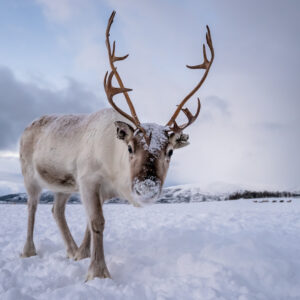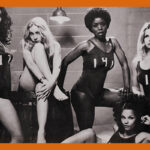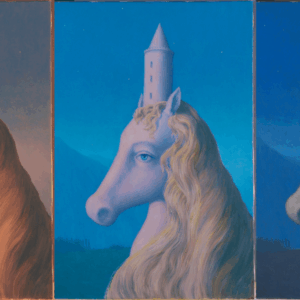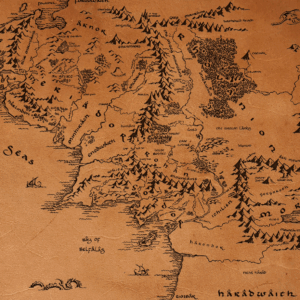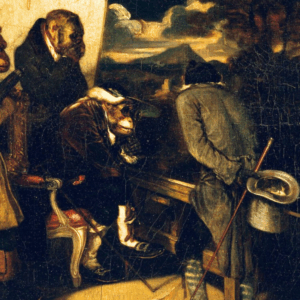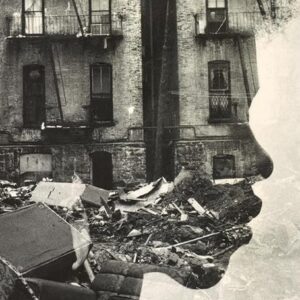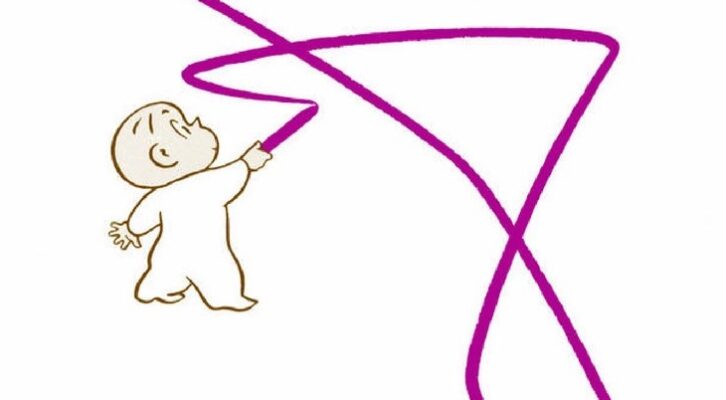
Small Book, Big Ideas: Harold and the Purple Crayon and the Art of Imagination
Philip Nel on the Enduring Cultural Legacy of a Children’s Classic
Crockett Johnson’s Harold and the Purple Crayon (1955) was Prince’s favorite childhood book. It is why Prince played purple guitars, favored purple fashion, and strongly identified with the color purple. Harold has inspired improvisational theatre, experiments in virtual reality, and Pulitzer-Prize-winning author Richard Powers to become a writer. Upon receiving the Caldecott Medal for Jumanji (1981), the classic picture book that would launch a film franchise, Chris Van Allsburg thanked “Jan Vermeer, for the way he used light;…Federico Fellini, for making films that look the way they do;…and Harold, for his purple crayon.”
Harold and the Purple Crayon has sold more than five and a half million copies, been translated into fourteen languages, and launched six more Crockett Johnson books chronicling Harold’s adventures (1956-1963), as well as a seventh (2020) not created by Johnson. It has inspired an animated cartoon (1959), an Emmy-winning TV series (2001-2002), a board game (2001), an iPad app (2011), two-stage adaptations (1990, 2009), a feature film (2024), and many artists. Harold is a cultural phenomenon and a window into the creative mind.
The book…tells readers that, though they may be subject to forces beyond their control, they can improvise, invent, draw a new path.
It’s such an influential book because Harold and the Purple Crayon is one of the most succinct expressions of imaginative possibility ever created. Coming from Johnson’s biographer (me), that claim may sound like hyperbole. But consider: the book shows how the mind can change the world, how dreams can make realities. It tells readers that, though they may be subject to forces beyond their control, they can improvise, invent, draw a new path. Yes, there are many earlier works that explore boundaries between real and imagined worlds. In Chuck Jones’s Duck Amuck (1953), a mischievous animator (revealed at the end to be Bugs Bunny) keeps scrambling Daffy Duck’s reality. In René Magritte’s The Human Condition 1 (1933), an easel partially blocks the view through a window and seems to render the “real” landscape it obscures: however, since both easel and landscape emerge only within the canvas of Magritte’s larger painting, the work raises the question of why and where we mark the borders of the “real.”
Though not the first to pursue this idea, Johnson distills it into its simplest and most profound form—using only a child artist, a crayon, and a blank page. Explaining why Harold and the Purple Crayon is the children’s art book she recommends above all others, Jackson Pollock biographer Deborah Solomon says that Harold tells us “one well-worn, stubby crayon could allow you to dream up a whole universe. Which of course it can. There’s no better art history lesson than that.”
Harold and the Purple Crayon is a small book about big ideas. It raises questions about the nature of reality; the implied audience of children’s literature; abstract art versus representational art; and the color of crayons, ink, and people. All of these questions depend upon how children’s picture books work—in this case, the apparent invisibility of Johnson’s design choices, the limits imposed by the offset color lithography printing process, the history of the crayon, and the book’s circulation into the hands of many real children around the world.
Children may have less height, vocabulary, and power than adults do. But children’s books are not a lesser art form. As Nathalie Op de Beeck writes, the picture book depends upon a “complex interdependency of visuals, words, and sequence.” Though people new to the study of picture books often say that the pictures illustrate the words, they do no such thing. There can be no one-to-one correspondence between text and image because, first, that would make for a boring book, and second, words and images do not communicate in the same ways. What sort of chair does the word “chair” conjure in your mind? If I asked you to imagine a chair, would you see a wicker seat with a back made of two concentric loops, a solid plastic chair, a metal-and-canvas butterfly chair, or one of those plastic office chairs on wheels? Or perhaps you envision an Eames chair, a chaise lounge, a bean-bag chair, or the “high-backed chair” that Harold draws at the end of Harold’s Fairy Tale (the second book in Johnson’s series)? Or maybe something else entirely? In picture books, as William Moebius reminds us, “Pictures and words together are treated as semiautonomous and mutually attractive chains of meaning rather than as fixed images serving as supplement to meanings fixed in words.” Building on the complex relationship between words and images, the picture book is both meticulously designed and (often) mass-produced.
It is a flexible narrative art usually created by adults but enjoyed by readers of any age. As Barbara Bader puts it, the picture book is “text, illustration, total design; an item of manufacture and a commercial product; a social, cultural, and historical document.” The picture book is an art form worthy of sustained attention.
As Jenny Odell writes of the need for attentiveness more generally, “Context is what appears when you hold your attention open long enough; the longer you hold it, the more context appears.” Johnson’s book has held my attention for most of my life. I first read Harold and the Purple Crayon fifty years ago, began writing about Crockett Johnson twenty-five years ago, and conceived of writing How to Draw the World: Harold and the Purple Crayon and the Making of a Children’s Classic ten years ago.
The longer I’ve looked, the more contexts have appeared. That said, looking closely does not require years. You need only focus and a willingness to ask questions. I hope my small book about a smaller one both models the pleasures of sustained attention and inspires you to look closely at art that interests you—picture books, of course, but really any kind of art. When you look, listen, or read closely, what questions does the art invite? Which questions from my book will work for you? What new questions will you need to ask?
To convince readers that the book’s meticulously designed journey is improvised by a small child, Johnson’s artifice had to remain invisible.
Picture books are the ideal place to begin looking closely because in addition to being many people’s introduction to visual art, a picture book is a portable art gallery. It is a more democratic art form, requiring only a library card, instead of, say, admission (and thus proximity) to a gallery. True, access to a library cannot be taken for granted: in the UK, Conservative and Lib Dem austerity measures led to the closure of 800 libraries between 2010 and 2020. In the US, budget cuts combined with rightwing attacks on diverse children’s books are putting libraries in danger, too. However and at least for the present, libraries remain more accessible than galleries. In 2017, 49 percent of Americans visited a library, but only 24 percent went to a museum.
As one of our earliest aesthetic experiences, picture books shape our perception of what art is and why it matters. As some of the first narratives we read (or have read to us), picture books show us how stories can make sense of the world and, in the case of Harold and the Purple Crayon, how we can create stories to guide us through that world. As Shaun Tan says of literature for children more generally, “Like a child daubing a paintbrush, it’s just enough to know that even the most modest scribble or wordplay can at any moment lead to a simple but profound realization: the world is just what you make of it, a big, unfinished picture book inside your head.”
How to Draw the World takes Harold and the Purple Crayon as a case study of what we miss when we underestimate, trivialize, or simply fail to examine the art and design of the picture book. Indeed, Harold’s deceptively transparent aesthetic makes it ideal for such an inquiry because, at first glance, the book looks self-explanatory.
It isn’t. To convince readers that the book’s meticulously designed journey is improvised by a small child, Johnson’s artifice had to remain invisible. But Johnson did sometimes wish that people noticed how clever his apparently “simple” work was.
As he once said, “Never overlook the art of the seemingly simple.”
__________________________________
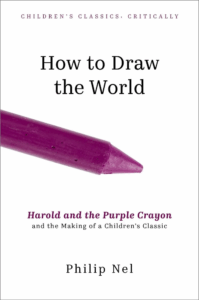
From How to Draw the World: Harold and the Purple Crayon and the Making of a Children’s Classic by Philip Nel. Copyright © 2025. Available from Oxford University Press.
Philip Nel
Philip Nel is University Distinguished Professor of English at Kansas State University and the author or co-editor of 13 books, including: Keywords for Children's Literature (with Nina Christensen and Lissa Paul) and a double-biography of the children's writers Crockett Johnson and Ruth Krauss. His Was the Cat in the Hat Black?: The Hidden Racism of Children's Literature and the Need for Diverse Books was one of the catalysts for Dr. Seuss Enterprises' March 2021 decision to stop publishing six Dr. Seuss books that contain racist imagery.









